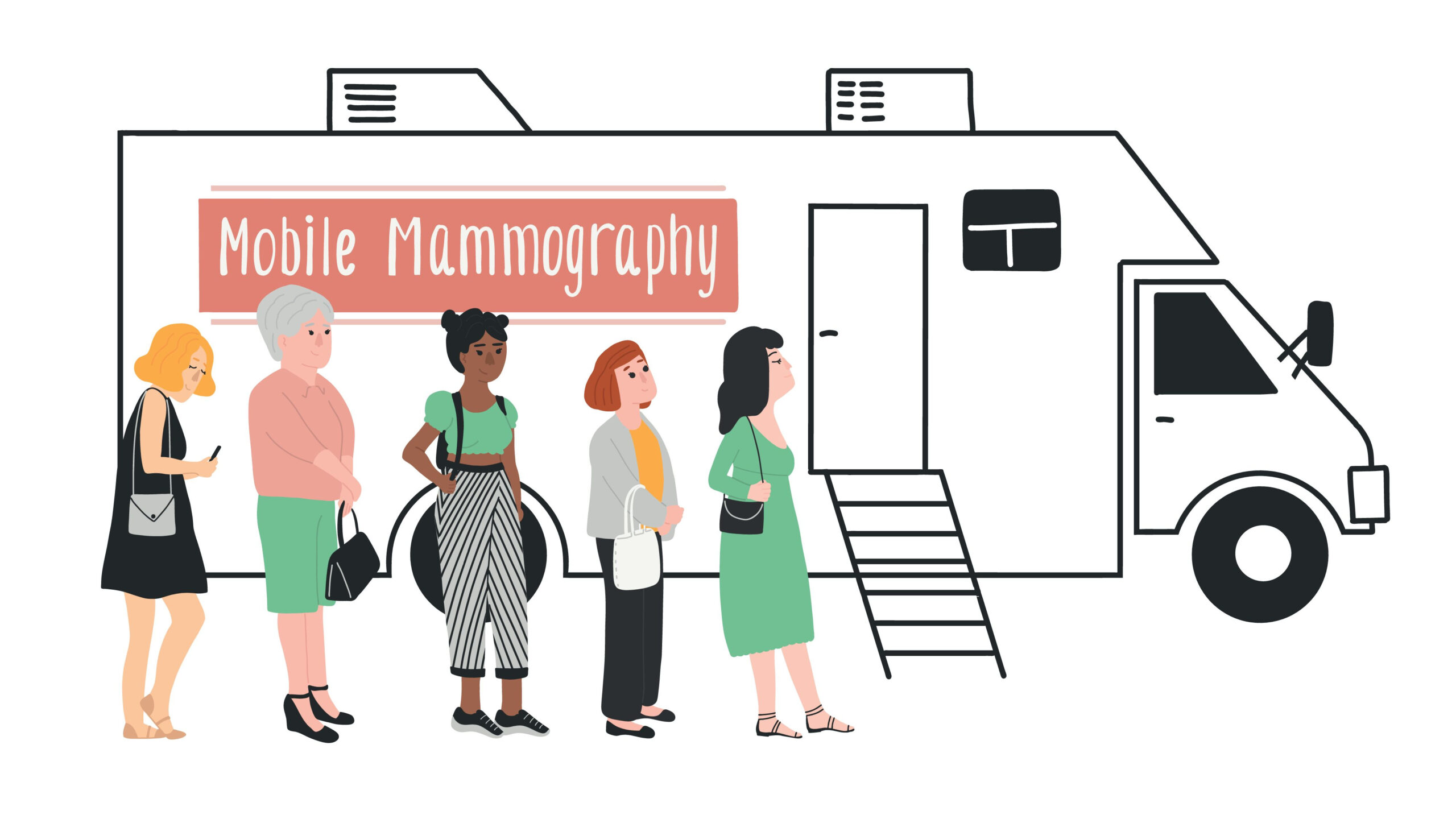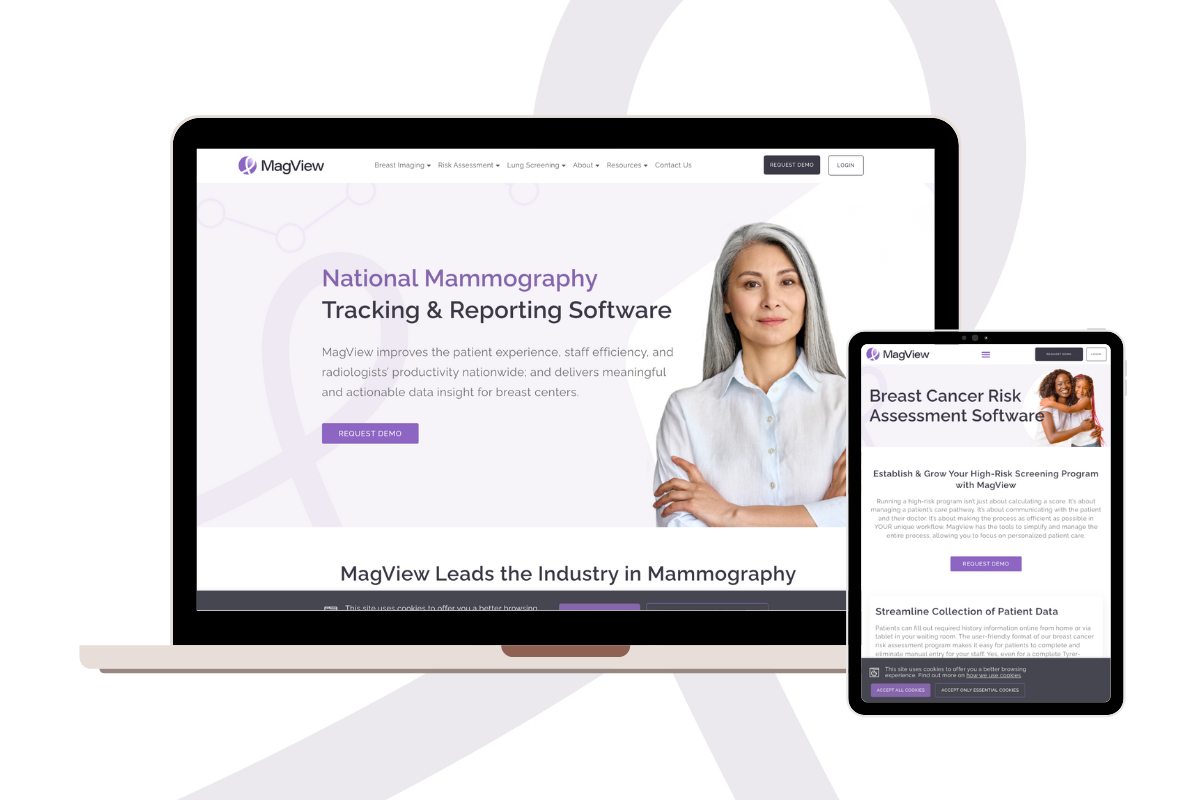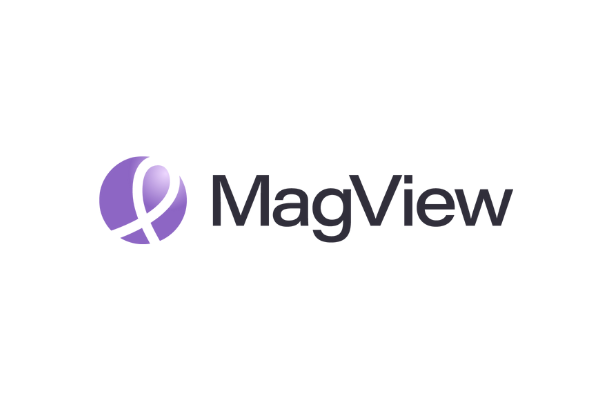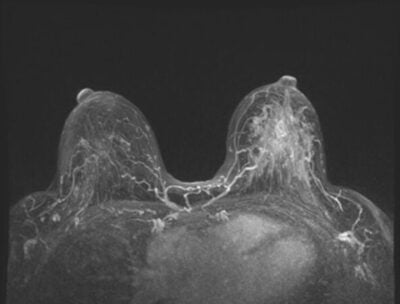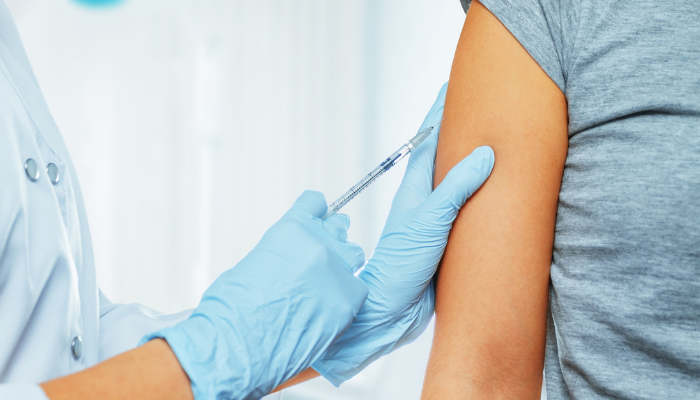Understanding a patient’s genetics plays an integral role in being able to assess their comprehensive risk for breast cancer. That’s why MagView has incorporated genetic risk factors into its breast cancer risk assessment software and created an easy way for breast centers to integrate genetic testing into their organization’s workflow.
The Role of Genetics in Breast Cancer Risk
According to breastcancer.org, an estimated 5% to 10% of breast cancers are caused by abnormal genes that a parent passes to a child. DNA changes that cause these abnormal, inherited genes are referred to as “germ-line alterations” or mutations.
Download the FREE ebook: High-Risk Breast Screening: A guide to building a successful high-risk screening program
What Happens During Genetic Testing for Breast Cancer?
BRCA1 (BReast CAncer gene one) and BRCA2 (BReast CAncer gene two) mutations are the two mutations most commonly associated with hereditary breast cancer. As they are passed from one generation to the next, the risk for breast, ovarian, and other cancers increases. In fact, there is often a family history of these types of cancers in women who are diagnosed with breast cancer and who have BRCA1 and BRCA2 mutations.
Breast Cancer Genetic Testing Criteria
Although having these two mutations doesn’t necessarily mean a woman will get breast cancer, it’s estimated that BRCA1 and BRCA2 mutations may account for up to 10% of all breast cancers. Additionally, compared to the 12% risk the average woman in the U.S. faces of getting breast cancer in her lifetime, breastcancer.org notes that for a woman with a BRCA1 mutation or BRCA2 mutation (or both), the risk of being diagnosed with breast cancer during her lifetime can be as high as 72%.
Breastcancer.org also describes how levels of genetic risk are generally defined:
- High risk: “Lifetime breast cancer risk is estimated to be greater than 50%.”
- Moderate to high risk: “Lifetime breast cancer risk estimates range anywhere from 25% to over 50%.”
- Moderate risk: “Lifetime breast cancer risk is estimated at about 25% to 50%.”
- Uncertain risk: “There isn’t enough evidence from research studies to link the mutation with an increase in breast cancer risk, but it has been linked with ovarian cancer risk and possibly other cancers.”
Guide to Integrating Genetic Testing Into High-Risk Screening
At MagView, we know how important a patient’s genetic profile can be when it comes to assessing their comprehensive risk for breast cancer. That’s why we’ve made it as easy as possible for breast centers interested in building a high-risk screening program to integrate genetic testing into their patient care workflow.
After all, running a high-risk program is about much more than just calculating a score. Instead, it should include all the benefits a high-risk screening program can provide, including the ability to:
- Streamline the collection of patient data
- Automate the identification of high-risk patients
- Receive recommendations and next steps
- Communicate risk information to the patient and their provider
- Automate patient follow-up
With such capabilities at their fingertips, breast centers can:
- Empower patients to know more about their risk
- Recommend the most appropriate medical management through precise risk stratification
- Stay competitive in the marketplace by enhancing the services offered
MagView offers the tools needed to simplify and manage the entire process, allowing our clients to focus on personalized patient care. The following provides more detail about what that looks like, and how genetic testing can be integrated into your workflow.
From Initial Encounter to Final Results
Patients can fill out their health history questionnaire either through the MagView online patient portal or on one of our patient tablets available in the breast center’s waiting room. Since the questionnaire can be customized to your breast center’s needs, you can ask patients whether they’re interested in genetic testing or have already had it done. This can help spark interest and increase awareness about the important role it plays.
Once the relevant information is provided, MagView’s breast cancer risk assessment software automatically calculates risk assessment scores and flags high-risk patients in a single system. The score can then be integrated into the radiologist’s reporting platform with no interruption to their workflow.
MagView’s risk assessment solution provides access to a variety of risk assessment models—including the Tyrer-Cuzick or IBIS v8, which allows patients to build a “family tree” related to breast cancer risk based on responses within the family history section.
Once risk assessment results are available, MagView then provides real-time guidance and recommendations based on NCCN guidelines and/or a breast center’s individualized protocols. Patients who are eligible for MRI, genetic testing or genetic counseling can be identified and each recommendation tracked to ensure follow-through.
In this context, genetic counselors play a key role. These specially-trained medical professionals possess expertise related to genetics and disease and can help patients build a cancer-specific family tree when needed, decide which genetic tests would be most appropriate, and aid in the interpretation of results.
The Power of the MagView-Myriad Genetics Partnership
The seamless integration between the MagView patient chart and the Myriad Genetics interface means that patients who are identified as high risk and recommended for genetic testing and counseling can get both before they leave the breast center. The ability to do so enhances the patient experience and improves efficiencies for breast center staff.
Here’s how the MagView-Myriad workflow makes the most of this integration:
- Patient completes history questionnaire using MagView’s tablet, online portal, or interview with the technologist.
- Appropriate patient data is sent to Myriad’s Patient Education Team.
- Myriad’s board-certified Genetic Counselors complete the Patient Education session with the patient during their imaging appointment.
- Completed Myriad MyRisk® test order form with pedigree and chart note are sent back to
- MagView within minutes of the patient having completed the Patient Education session.
- MagView software auto-prints the Myriad MyRisk® test order for the staff to send with the patient sample to Myriad for processing.
MagView’s integration with Myriad’s patient education offers an array of benefits, including:
- Allows you to deliver comprehensive risk assessment by incorporating genetic risk into your existing protocol and platform.
- Educates your patients to allow for quick sample collection by connecting them real-time to Certified Genetic Counselors who have access to their electronic patient history.
- Ensures you are completely aware of what is discussed through electronic delivery of documented Pedigree and Chart Note into your MagView software.
By providing these unique offerings, MagView makes it easy for a breast center to run a successful high-risk screening program that integrates genetic counseling and testing to optimize patient care—while creating a competitive edge in the breast imaging marketplace.
To learn more about how to start your high-risk screening program, check out MagView’s High-Risk Breast Screening ebook and contact us today.



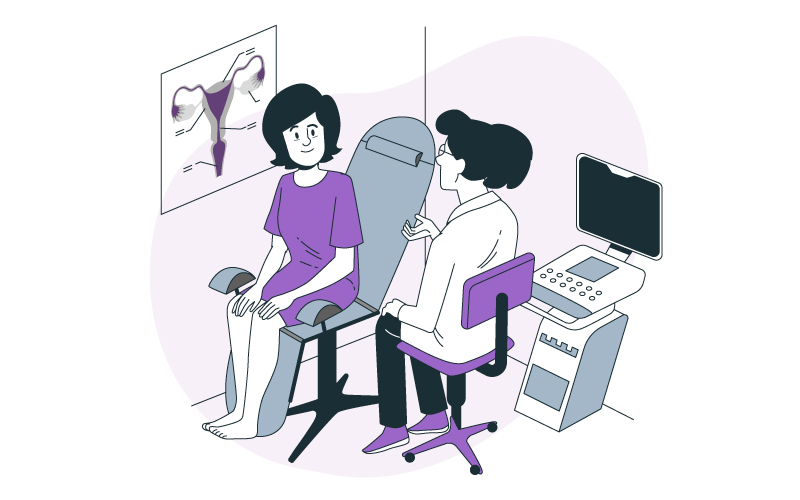




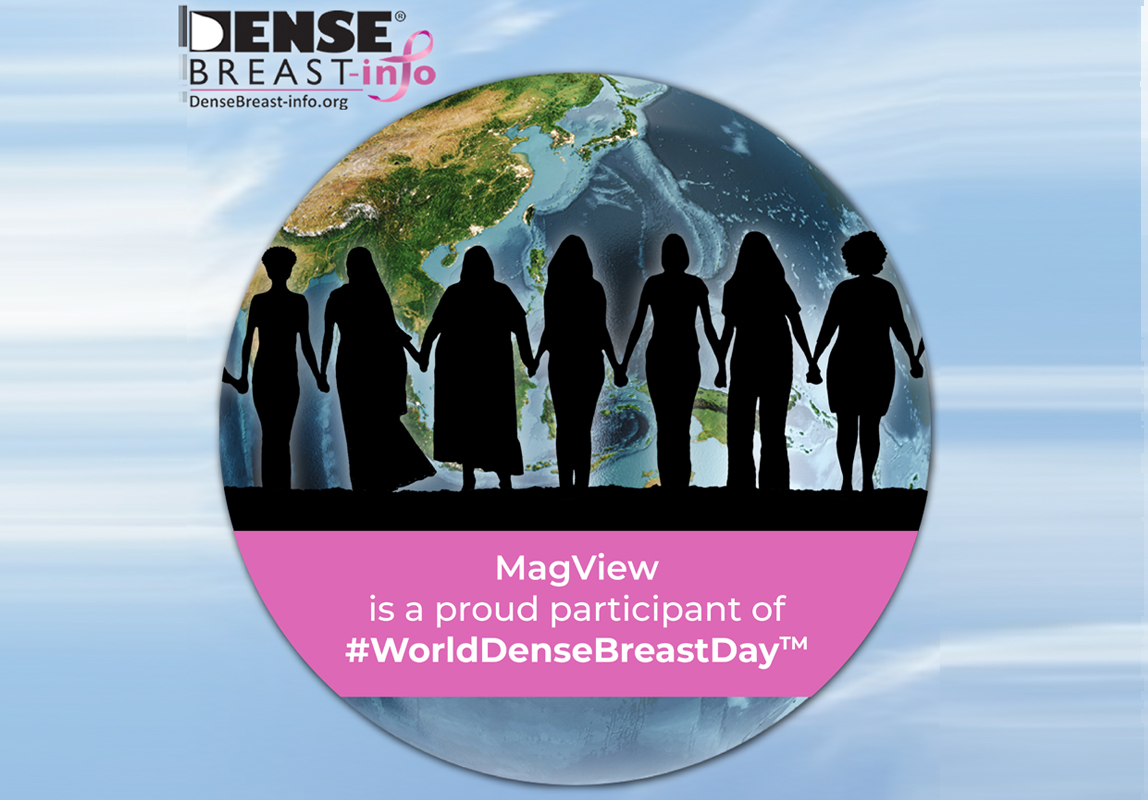
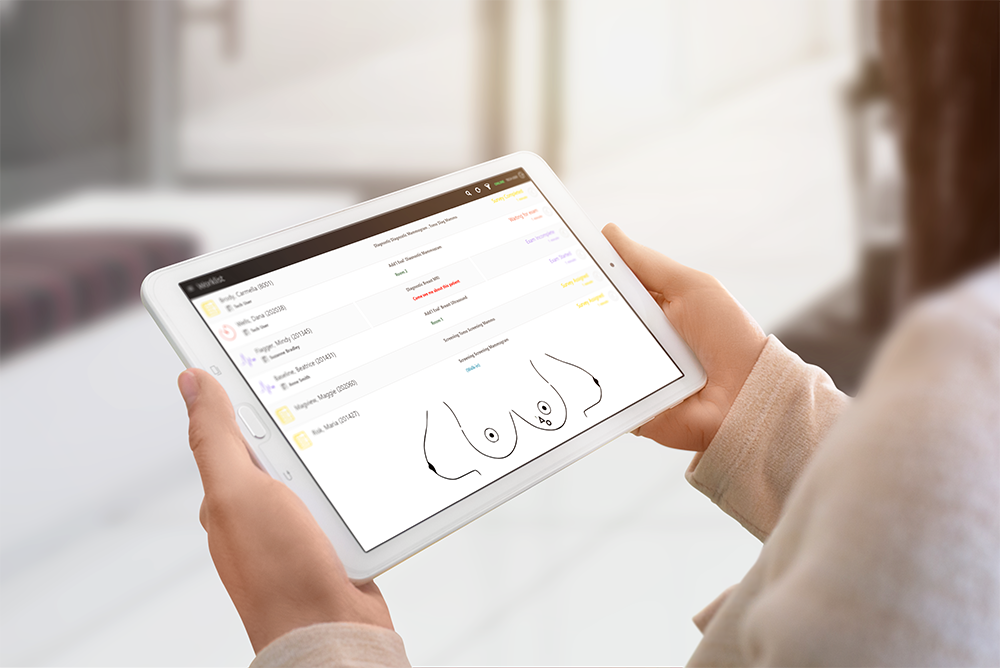

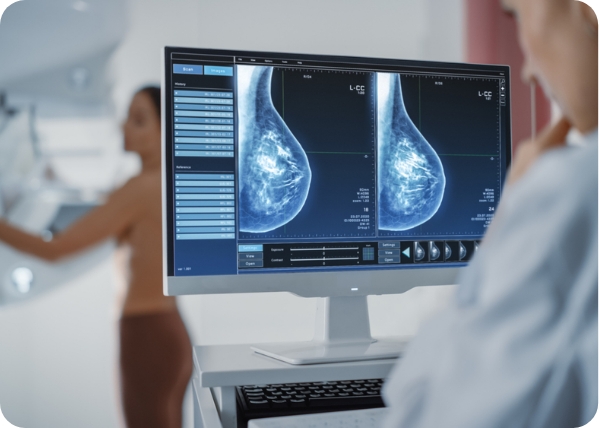


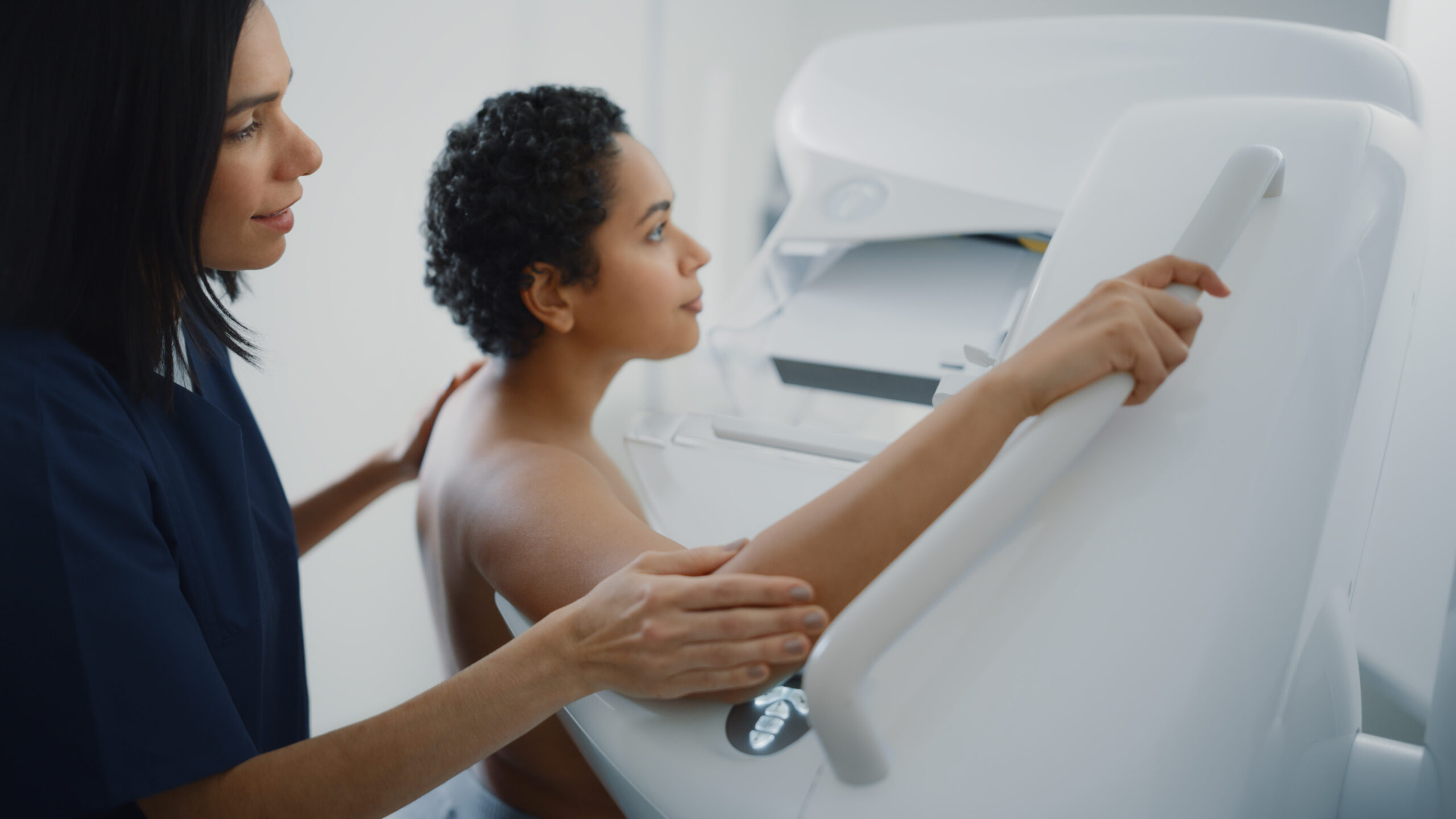
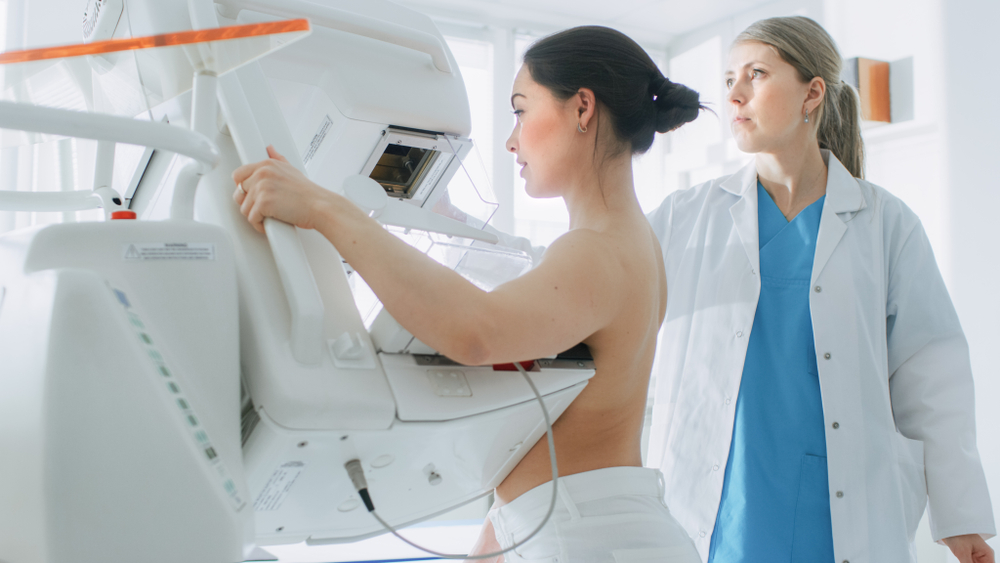
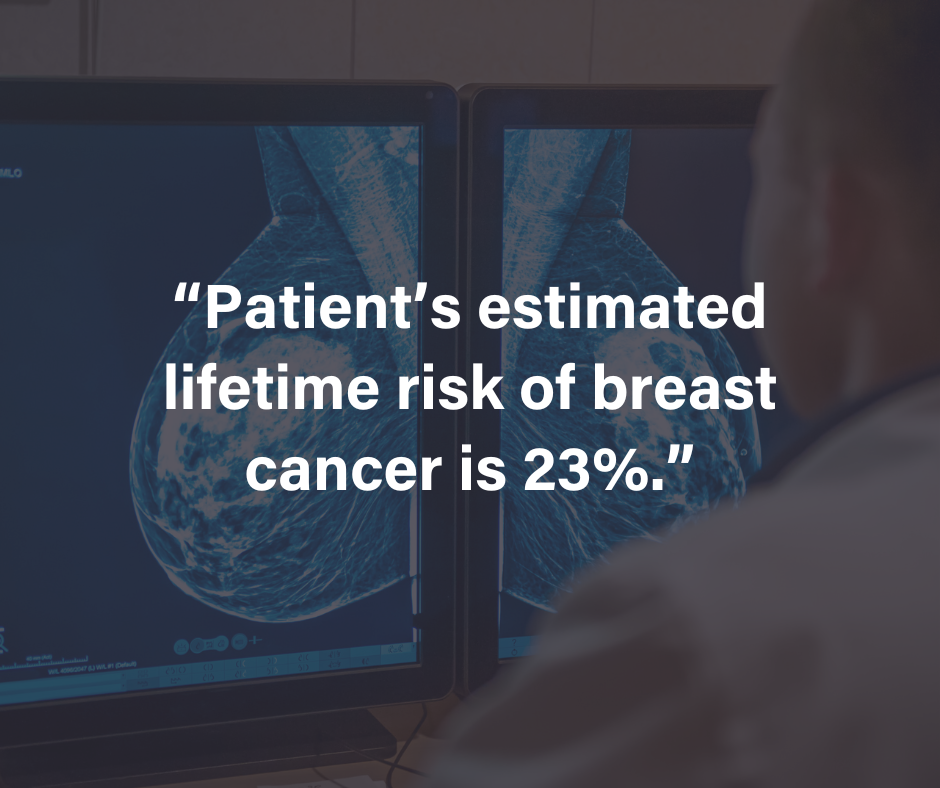







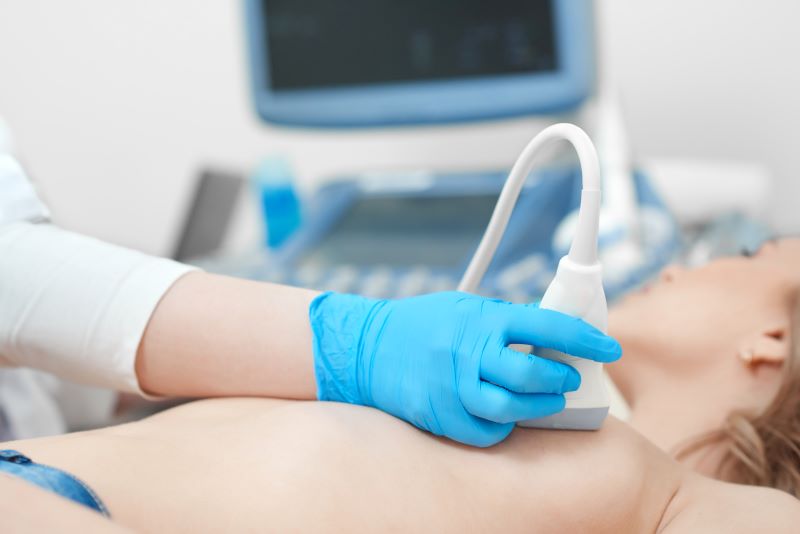
![monitoring breast density shutterstock_1299510538-[Converted]](https://magview.com/wp-content/uploads/2023/05/shutterstock_1299510538-Converted.jpg)
